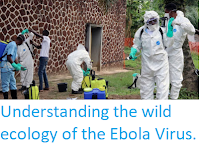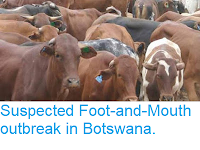More than 4000 people, most of them children under five, have died in an outbreak of Measles in the Democratic Republic of Congo that began in January this year (2019), according to UNICEF. Around 200 000 cases of the disease have been reported, 140 000 of them children under five. The epidemic has been able to take hold due to a low rate of immunisation in the country, which lacks a well organised healthcare system and where vaccinations are widely viewed with suspicion, and the rate of mortality among those infected has been high, again due to poor access to healthcare. The UN agency is currently distributing healthcare kits to help look after those infected, as well as working with the Congolese Government to vaccinate children across the country.
An infant receiving a vaccination against Measles at the Centre De Sante Le Rocher Maternity in Lubumbashi, Democratic Republic of Congo. UNICEF.
Measles is a Viral Disease, that presents as a fever combined with a
cough and inflamed eyes, followed by the development of a rash first in
the mouth and then across the body. About 30% of cases go on to develop
complications, which can include diarrhoea, blindness, inflammation of
the brain and pneumonia, and the disease can be fatal. Measles is a
highly infectious airborne disease spread by coughing, with un-immunised
people living in close proximity to infected persons having an
approximately 90% chance of catching the Virus. The disease is easily
prevented by vaccination, but hard to treat once people are infected,
with small children, who are least likely to have been immunised,
particularly vulnerable. This makes it particularly important for health
workers to be alert for new cases once the disease becomes established
in an area, and ensure that all potential cases are screened for the
Virus promptly.
Thin-section transmission electron micrograph of a Measles Virus.
Measles is caused by a single-strand RNA Virus belonging to the genus Morbillivirus,
which also includes the Viruses that cause Canine Distemper and
Rinderpest, as well as a variety of other diseases infecting domestic
and wild Mammals. The genius Morbillivirus is in turn a
member of the Paramyxoviridae, a group of Viruses that infect a wide
range of Mammals, Birds, Reptiles and Fish, and includes the Virus that
causes Mumps in Humans.
See also...
Follow Sciency Thoughts on Facebook.








